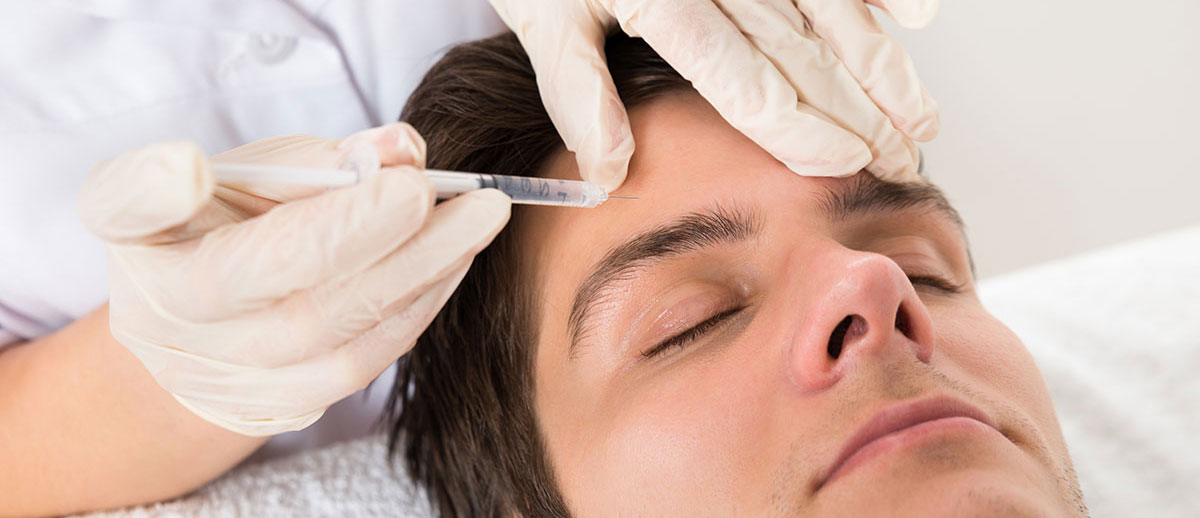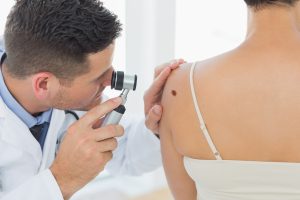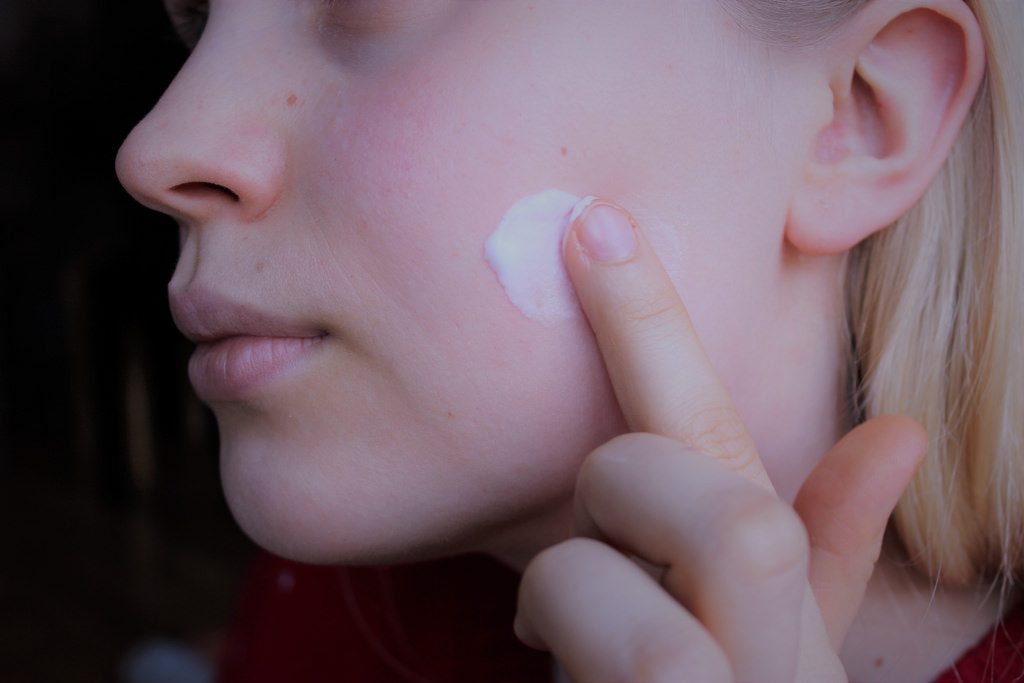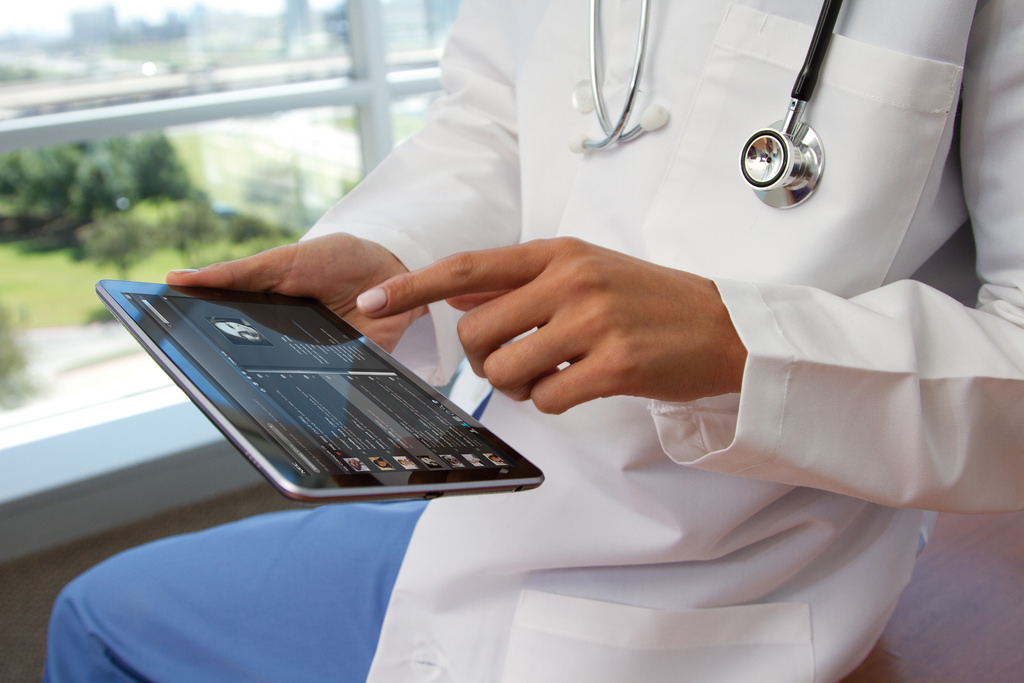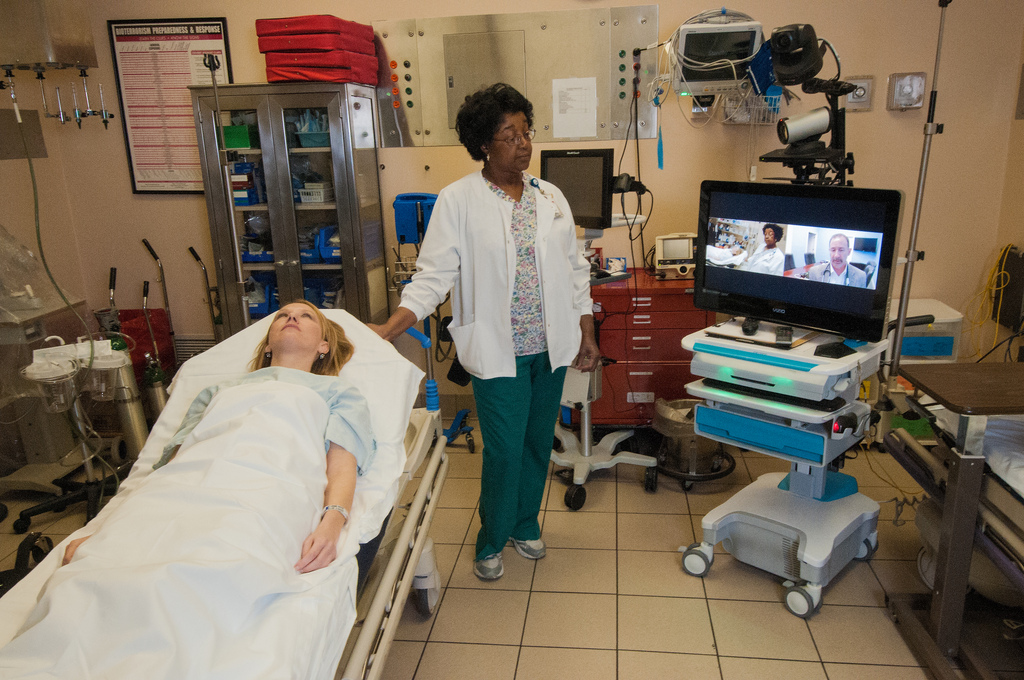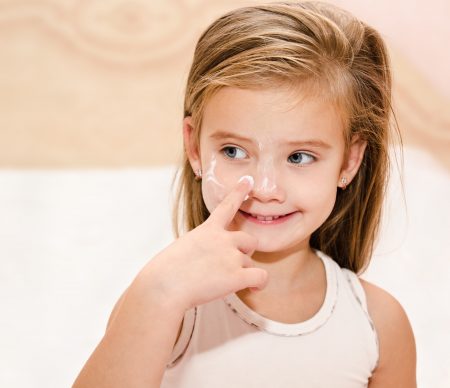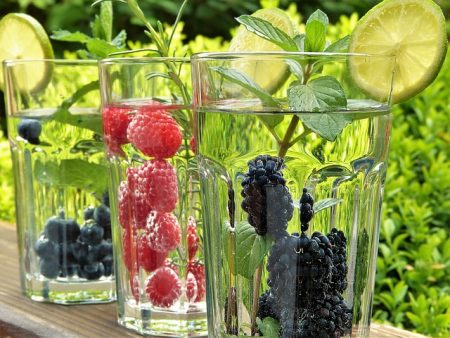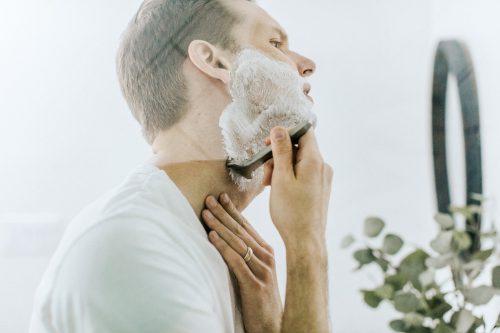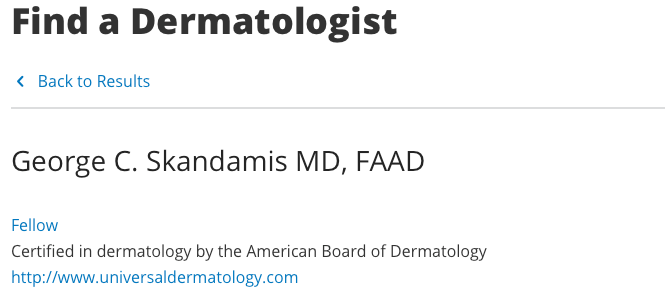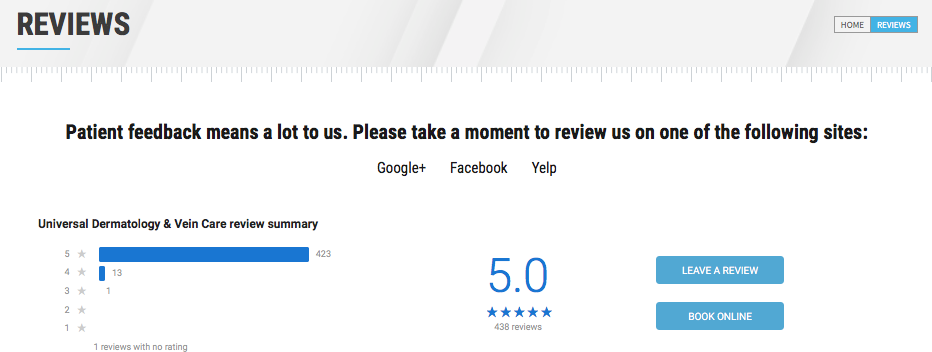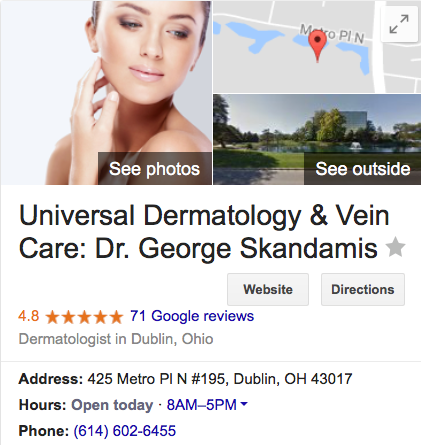The Importance of Receiving Annual Skin Checks
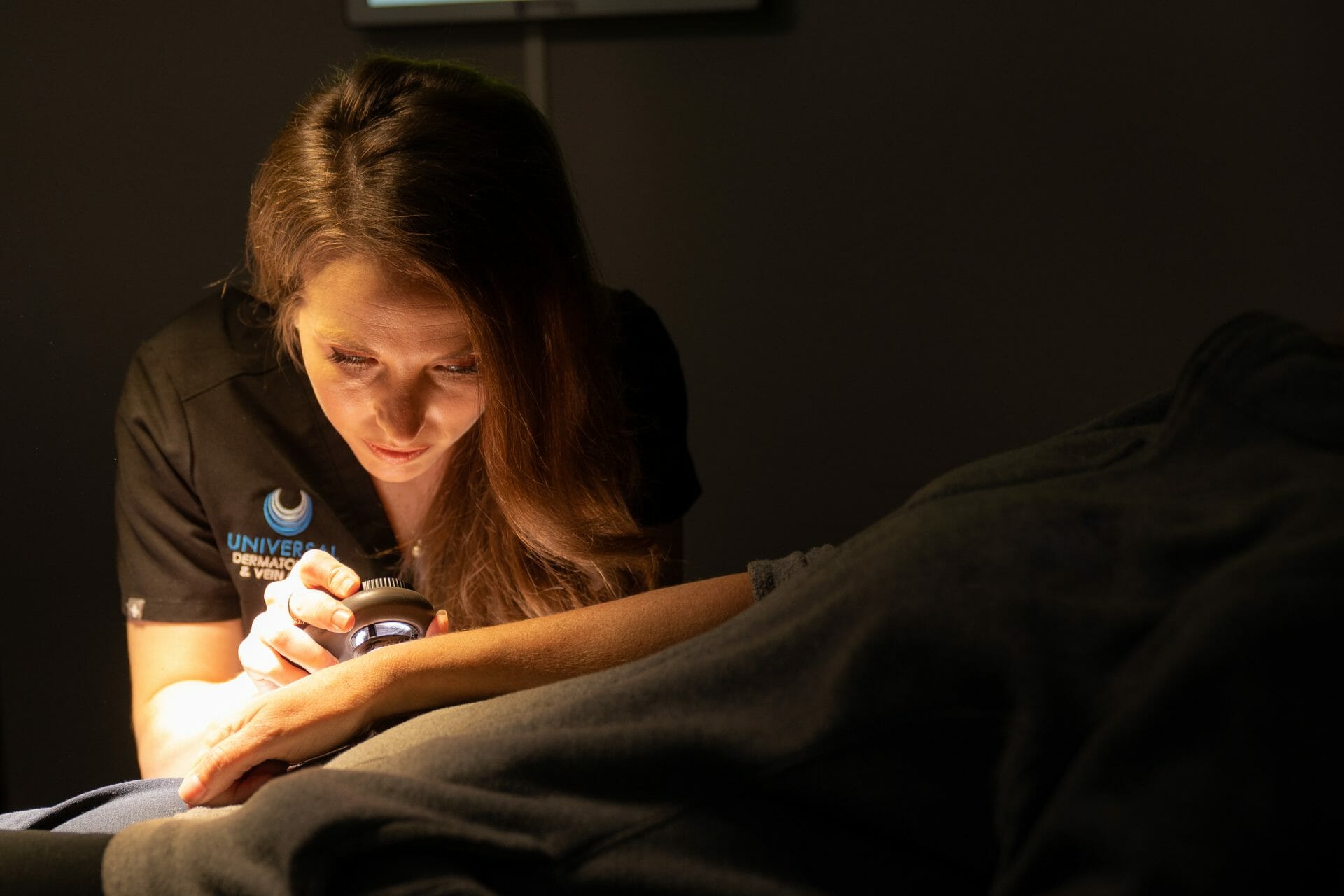 Many people undervalue the importance of skincare and skin checks. However, the fact remains that our skin is our first point of contact with the outside world and may require extra attention. Just as there are many layers of the skin, there are also many layers and levels of skincare. The first level of skincare is taking care of your skin from the inside out. This includes eating and drinking well, resting sufficiently, and exercising regularly.
Many people undervalue the importance of skincare and skin checks. However, the fact remains that our skin is our first point of contact with the outside world and may require extra attention. Just as there are many layers of the skin, there are also many layers and levels of skincare. The first level of skincare is taking care of your skin from the inside out. This includes eating and drinking well, resting sufficiently, and exercising regularly.
Skincare Inside and Out
In many ways, the old adage, “you are what you eat” is true. What you eat and drink will show up on your skin. Do your best to stay away from processed foods and sugary drinks. Drink lots of water, eat fruits, vegetables, lean meats, and exercise regularly.
In addition to taking care of your skin from the inside, there are lots of things you can do to take care of your skin on the outside. With the right topical care and necessary professional treatments, you will be able to have youthful, glowing, and healthy skin. The first step in good external skincare is, of course, scheduling an annual check with your dermatologist.
The Importance of Annual Skin Checks
A regular skin check is just as important as an annual physical. It is easy to take the condition of your skin for granted, especially because we are used to looking at it every day—its condition is our normal. However, there are many conditions that can go undetected. With an annual skin exam, you are able to take the necessary corrective and preventative steps for conditions like these.
For example, one in every five Americans will develop skin cancer in their lifetime (AAD). One of the reasons for this is the inability to identify early symptoms and warning signs. When detected early enough, skin cancer can be extremely treatable. Annual skin checks can make a huge difference in treating this condition effectively.
Taking Care of Your Skin Between Annual Skin Care Exams
Naturally, it is expected that you will continue to take care of your skin between annual checks. Here are two of the most important aspects of skincare that you should do daily.
Moisturizing
Moisturizing the skin regularly is an often overlooked part of skincare. However, it is one of the most recommended practices in dermatology. Keeping your skin properly moisturized can help guard against certain diseases and skin conditions, so it is always recommended—especially in the summer and winter months when the weather can be particularly harsh and drying for the skin.
Wearing Sunscreen
Sunscreen, like moisturizers, is another often ignored skincare habit. UV rays have been directly linked with skin cancer. As such, it is important that you protect yourself and your skin. A sunscreen with SPF 30 has been proven to effectively block out around 97% of the sun’s rays from harming the skin.
Get Professional Dermatology Care Today
It is easy to think of dermatologists as the doctors you turn to when something is wrong. However, you shouldn’t wait until there is a problem to schedule an appointment. Dermatological care is an important part of overall health. Therefore, whether you are noticing symptoms of certain conditions or seem to have clear skin, annual checks and skincare treatments by professionals is important.
Universal Dermatology & Vein Care can provide comprehensive dermatology care for your skin, hair, and nails. We have a friendly and experience team waiting to answer your questions and provide you with any treatment options you may need. Contact us today to schedule an annual skin check!
Lear MoreTrendy Skin Care Treatments That You Don’t Need
Your skin is your body’s largest organ and its first line of defense, so it is very important to take good care of it. If you have been looking for skin treatments that target acne, wrinkles, hyperpigmentation, stretch marks, or cellulite, you may have stumbled upon various trendy skin treatments that claim to eliminate or reduce those skin imperfections.
Treatments such as at-home micro needling, at-home chemical peeling, and other DIY “miracle treatments” may actually do more harm for your skin than good. Here is a brief guide on trendy skin treatments you simply do not need.
At-Home Microneedling
Many proponents of micro needling claim that this treatment can reduce or erase scars, wrinkles, and discoloration. Recently, there has been a surge of at-home micro needling kits and devices available for public use. Many medical professionals have urged users to be cautious when utilizing these at-home kits and devices since micro needling does, essentially, injure the skin in order to stimulate collagen production and induce repair. Since microneedle causes injury to the skin, improper use of this treatment system can cause bleeding, scarring, bruising, excessive pigmentation, and infection.
Because of the nature of micro needling, it is wise to go to a professional for this procedure. A healthy alternative to micro needling is using products that are medical grade and exclusively sold by dermatologists. These products typically have multiple clinical studies to guarantee the best results. Retinol, Vitamin C, and SPF are highly recommended. Retinol helps with cellular turnover, acne, as well as fine lines and wrinkles. In order to rep a bright flow and protect the skin from free radical damage, patients are encouraged to use vitamin C typically on a daily basis. SPF should be worn 365 days a year to block harmful UVA/UVB rays that cause premature aging.
At-Home Chemical Peels
Chemical peeling has become a widely sought-after procedure for those seeking to reduce or eliminate spots, blemishes, wrinkles, sun damage, acne scars, or hyperpigmentation. Skin peels with mild, medium and high concentrations are now widely available on the market and at-home skin peeling has become a very popular practice. Though these peels may seem enticing, many medium-depth and deep chemical peels can cause severe complications such as scarring, discoloration, and infection, especially when used without doctor supervision or sedation. Many people have reported that chemical peeling left their skin feeling extremely dry and sensitive. To avoid these complications and sensitivities, you may want to seek alternatives to chemical peeling. Some healthy alternatives to at home chemical peels include using glycolic acid cleansers and retinol to exfoliate chemically at home. If you decide to proceed with a chemical peel, do it under the supervision of a doctor.
Other At-Home Skin Treatments
Since the dawn of time people have been getting creative with at-home solutions for everything, and skin is no exception. You’ve 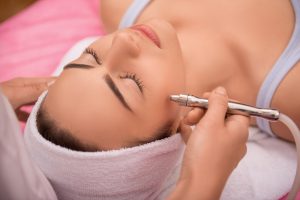
If you hear of a skin care treatment that seems just good to be true, consult your dermatologist. Odds are, especially with dermatology, that there is a better safer solution waiting for you at your dermatologist’s office. If you have any questions about skin care treatments, call the experts at Universal Dermatology. Together, we will find a safe and healthy treatment plan for your skin.
Lear More
What Is Mohs Surgery?
If you are spending a lot of your time at work or leisure under the sun, your skin is at risk of overexposure to the sun’s ultraviolet rays. Your skin is liable to show the effects of this exposure over time. Those who are spending too much time on tanning beds face the same risks.
The unwanted result can be a variety of different skin cancers. Thankfully there are many treatments for this ailment that can alleviate skin problems and eliminate the risk of skin cancer. One of these treatments is Mohs surgery. Some say that it is the best of all treatments based on several reasons.
What Is This Surgery?
Mohs is a surgical procedure that can be used to remove skin cancer. There are two types of skin cancers that some believe could be best treated by this micrographic surgery. They are squamous cell carcinomas or SCC and basal cell carcinoma or BCCs. These two types are the most common of all skin cancers.
It started as chemosurgery procedure developed in the late 1930s by Dr. Frederic E. Mohs. This particular skin cancer surgery came to be regarded as the most effective treatment for SCCs and BCCs. It is the type of surgical procedure that is commonly recommended for the treatment of cancers that develop on the face, eyes, nose, ears, hands, feet, lips and genitals.
Dr. Perry Robins, a dermatologist, was the first to study the technique used in this surgical procedure. Through the efforts of Dr. Robins, the current micrographic surgery was developed and perfected.
Why Would Someone Need This Surgery?
If you or a person you know is suspected of having some skin cancer-related problems on the face or any part of the body, you are advised to consult a dermatologist or a dermatologist to have the problem area checked or removed. You may need this surgery if:
- Cancer can disfigure or deform the body part where it developed
- The cancer is growing at a fast rate
- The cancer is very large
- The edges of the cancer are not well-defined
- The cancers developed in a scar tissue
- The skin cancer is a recurrence after a previous treatment and may reoccur
How This Surgery Works
The dermatologist will perform the surgery under local anesthesia. His purpose is to remove the thin layers of diseased skin tissues and examine each of the layers under a microscope. They will need to determine if the skin cells are malignant.
If the cells are malignant, surgery will continue. The surgical procedure will be undertaken until the doctor sees that these cancerous cells are totally removed. The whole procedure may take a while because the surgeon must be sure that they have eradicated all the cancerous cells.
While the procedure may be lengthy, it will prevent incisions or cutting off large sections of the skin. Large incisions lead to unavoidable scarring which prolongs the healing period. With Mohs surgery, skin scarring is very limited and healing time is reduced.
What To Expect When Undergoing This Surgery
Here are some of the things that you can expect if you elect to undergo this surgery.
- It is important to list all the medications that you have used prior to the operation. This will include all the vitamin or herbal supplements that you are taking. You should disclose any and all medications to your doctor.
- Typically, the procedure will take about three to five hours to complete. However, there are instances where actual situations can cause the procedure to go as long as an entire day. There are skin cancer types that take a longer time to treat because their roots have already burrowed too deep on the skin. Regardless, your doctor will not stop the procedure until all the cancer cells are removed.
- The surgical procedure will be relatively painless because you will be injected by a local anesthesia. It will numb that particular area of your skin where cancer has developed.
- When the anesthesia has taken effect, the doctor will start the procedure by removing a thin layer of the cancerous skin. Your dermatologist will use a cautery device to stop the bleeding. The doctor will then dress and bandage the wound. You will have to wait for the results of the skin examination to find out if cancerous cells are present.
- If your doctor finds problematic cells, he will repeat the process in other parts of your skin where cancerous cells could be. One incision on average takes an hour. On the average, the doctor will have to make about three incisions.
- The doctor may stitch the wound or ask a reconstructive surgeon to close the wound. If the incision is small, the doctor may just dress the wound and allow it to heal by itself.
How Long Is The Recovery Process?
The recovery process varies between cases for this surgery. Some factors that come into play are the complexity of the procedure and the health of the patient. Overall it can range from a couple days to a couple weeks for a full recovery.
What Will Be The Outcome?
The desired outcome is no more skin cancer. What about the scar? There will be a scar when you undergo this surgery. Therefore you need to consult with a reconstructive surgeon for options on how to minimize scarring.
What Is The Cure Rate?
This surgical procedure has high cure rates. The American Society for Mohs Surgery claims that for new cancer, there are about 99 percent cure rates and for recurrent cancer, around 95 percent.
If you struggle with skin cancer and believe you are a good candidate for Mohs surgery, contact the experts at Universal Dermatology & Vein Care. We can point you in the right direction and find the treatment plan that is right for you. n
Lear MoreWhat Are Antioxidants and Why Do We Need Them?
Every magazine article and tv commercial speaks about antioxidants and their seemingly miracle-working qualities. What are antioxidants really capable of and why do we need them? We take a little closer look.
Atoms, which make up molecules, are at the center stage of every chemical reaction that takes place within the body. To undertake ordinary chemical reactions, molecules should have a balanced charge. Balance in the molecules means everything is running smoothly, which translates to good health. The trouble begins when some atoms acquire an extra negative charge, transforming them into free radicals.
The free radicals roam the body looking for a balanced atom they can snatch an electron from to balance their charge. This solves the atom’s problems but creates another unbalanced molecule (free radical). As the free radicals increase in the body, many issues start to occur, including unhealthy chemical reactions and uncoordinated body functions. The resulting chemical stress can lead to diseases such as cancer, arthritis, respiratory and heart diseases. As long as there are free radicals in the body, the chain reaction continues, causing more chemical imbalances.
What is an antioxidant?
The damage caused by free radicals is known as oxidative stress. To counteract the oxidative stress, you require antioxidants. These are atoms whose work is to give the radical atoms the electrons they need to balance the charge. When there are enough antioxidants in the body, free radicals do not need to steal atoms from other atoms, breaking the chain.
Antioxidants that give away their electrons become oxidized so the radical molecules can gain balance and stop damaging the cells. Their mission is to find free radicals and prevent the reaction and formation of new radicals.
The key to chemical reactions is that they take place in the atoms, the core or foundation of the cells that make up the body organs. If the chemical reactions are altered in the cells, the entire body will react differently.
Origin of Free Radicals
Inhaling pesticides, household cleaners, smoking, radiation, alcohol consumption and exposure to industrial waste can expose you to free radicals. Processed foods, sugary foods, some medications, and emotional stress may raise the levels of free radicals in the body. This means that you need to take care of your diet, understand the chemical composition of prescribed drugs and steer away from radiation therapy if possible.
To ensure the body’s supply of antioxidants outnumber the free radicals, limit chemical exposure and consume foods high in vitamins and minerals. In fact, we recommend that you fill your plate with all colors of food. This ensures you get all the required nutrients to fight off the free radicals.
How do you get more antioxidant power?
Diet is one of the most important considerations. As you will realize, you cannot prevent the total formation of free radicals or oxidation because these are some of the byproducts of the body processes. Supplements and foods rich in minerals and vitamins are vital in achieving the optimal power to clean the body and stay healthy. Vitamin C is one of the vital nutrients 
To boost the protective power, you should make a conscious decision to eat foods high in antioxidant power. These include whole grains, fruits, and vegetables. It is important to note that how you prepare your meals can preserve or destroy their potency or ability to fight off destructive elements in the body. Deep frying food leads to oxidation and breakdown of nutrients and so does overcooking. Cooking over low heat ensures all the nutrients stay intact.
Stick to a healthy diet and ensure you include foods rich in Vitamin C, A, E, lutein, flavonoids, selenium, and lignan. As noted earlier, vitamin C is the best antioxidant, so make sure you eat foods rich in the vitamin, such as citrus fruits, strawberries, and green leafy vegetables.
If you are worried about oxidation effects on your body, find solace in the fact that most bodily organs have a natural way of protecting themselves from this dangerous process. They can produce chemicals to fight oxidation and protect their cells from free radical damage. Being aware of the effects free radicals can have on your body can help you make better diet and lifestyle choices.
If you have questions about antioxidants in your body, contact our office today!
Lear MoreSimple Acne Fighting Tips
By some estimates, somewhere around 60 million people suffer from active acne. Most of those are young adults and about 25% of those people will actually have long-term scars as a result of severe acne that goes untreated.
Needless to say, acne can be a real problem for some people and a constant source of anxiety for many others. Many people are not aware that the everyday habits they engage in can be causing or exacerbating their acne.
Your skin is the most important (and one of the most sensitive) organs in your body. Here are some little-known acne-fighting tips to keep your skin clear, beautiful, and healthy.
Clean Your Face Regularly
The most important thing you can do to prevent acne from taking hold on your skin is to wash your face. Every time you go out into the world, exercise, sweat in any way, swim in a pool or lake, or expose your skin at all to the elements; dirt and oil can become trapped in your pores.
Other than genetic factors, these are the primary vehicles for acne to form. Even sleeping on dirty sheets or other surfaces can make your facial skin dirty. It may not look dirty but trust us, it’s there.
Each morning when you wake up, wash your face with a gentle exfoliator. Then do the same each night when you go to bed. Develop a routine habit of this and you should start to see improvement of existing mild acne and prevent new acne from forming.
Clean Your Phone
This sounds silly but our phones are some of the dirtiest objects we use each day. Some people say they are even dirtier than our money because we use our phones in all situations. We use them when we are eating, when we are in the bathroom, after we’ve handled other dirty objects, etc.
With that said, no consider the fact that you put your phone to your face at least a couple times each day. If you have never cleaned your phone, all of the things you touched in the time before you put it to your face are on there.
A good tip is to keep some wipes that are labeled as antibiotics. Choose something that kills germs and keep it in your car, at home, and at your place of work. Make a habit of wiping your phone screen down at least once a day.
If cleaning your phone is not practical, try using devices that allow you to use a phone function without touching your face. For example speakerphone, Bluetooth headsets, or the headphones that came with your phone are all good options.
Use Moisturizer
Washing your skin is great but keeping it moisturized is even better. Moisturizers keep pores in your skin open and make it less likely that dirt and oil will become trapped in your skin. Moisturizing after you’ve washed your face in the morning and at night is a good routine to follow.
 Take a Cooler Shower or Bath
Take a Cooler Shower or Bath
It is a common myth that hot water or steam opens the pores in your skin and cold water makes them close. In reality, your pores are not activated by temperature. Hot water has a tendency of making the outer layers of your skin swell which can make them look open but that is not why they are opening.
Heat causes enlargement of the capillaries near the surface of your skin and makes the area swell. In other words, hot water does nothing for you and cooler water is easier on the skin.
Plan a Healthier Diet
What you eat has a lot to do with what your skin looks like. You can help prevent acne by simply avoiding certain foods. While every person’s body and metabolism are different, here are some basic things you should avoid eating too much of:
Sugar: This is probably the worst for your skin. Some studies have shown that sugar has some sort of link to breakouts and consuming a lot of it can throw your body off balance. Keep track of your sugar intake. If you notice a breakout hours or days after consuming a lot of sugar, it’s best to steer clear.
Fast food: This is probably not good for anyone anyway but for acne sufferers, fast food can be a big no-no. Much of this kind of food is high in fatty acids and oils which make their way through your body and into your skin.
Wash Your Pillowcase
You would be surprised at how much a person can sweat in their sleep and we all do it. Even if you wash your face, shower, and moisturize before bedtime, your pillowcase and sheets accumulate dirt and oil overnight. Sweat builds upon our bodies and then it has no other place to go than into our bed linens.
Make a point to wash your pillowcases as often as you wash your other clothes. Change your pillowcase at least every couple of days to a clean one. This is one of those strategies where if you’ve tried a lot of other things to prevent acne, this may be yet another opportunity to avoid getting your skin dirty.
If you’ve tried many of these and failed, do not beat yourself up. Sometimes acne requires professional care and there is no way around it. Some people are predisposed to developing severe acne and require medical intervention. If you have chronic mild or severe acne and you haven’t done anything about it yet, these tactics are great places to start.
We are all products of our environment and the same principle can be applied to our skin. Make changes in your daily habits as a first step in combating your acne before contacting a professional or using more aggressive treatments. You may be able to save yourself a lot of frustration and money by simply doing things a little different in your everyday life instead of adding treatments that may not be necessary.
*Photo courtesy of Karolina Misev with www.cushyspa.com
Lear MoreWhat Are the Benefits of Telemedicine for Dermatology?
Technology has been revolutionizing industries all over the world and dermatology and vein care are no different. This is particularly true where the internet and creating points of access are concerned. In medicine and healthcare fields, telehealth is a growing option. As a dermatology care facility that is always on the cutting edge of technology, we are very interested in the benefits of telemedicine. So, we took a closer look, and here is what we have found.
The Difference Between Telehealth and Telemedicine?
While it is easy to picture video-conference interactions when we hear the term telehealth, it is so much more than that. In a nutshell, telehealth is any kind of medical care that allows medical practitioners to connect with their patients at a distance through the use of telecommunications. It is through telehealth technologies that telemedicine solutions become available. In other words, telemedicine is a specific kind of telehealth option.
What Exactly Is Telemedicine?
The term telemedicine refers to two things:
- A mobile app that allows medical practitioners and their patients to communicate through video chat.
- A software option that allows primary care providers to liaise with specialists at a distance by sending photos of certain conditions for a rapid, remote diagnosis.
Through these telemedicine solutions, patients are able to benefit from remote diagnosis and other kinds of care as they connect with their healthcare providers and dermatologists from a distance.
In What Ways Does Telemedicine Benefit the Field of Dermatology?
Telemedicine solutions can offer lots of benefits to dermatologists and their patients. Telemedicine solutions provide dermatologists and patients with options to stay connected even when they are miles apart. For example, there is no need for a patient to be in the room for a doctor to diagnosis them or follow up with a treatment. As such, we are able to provide faster, more rapid care solutions in a convenient and easily accessible way. This includes catching things like skin cancer more quickly.
7 Benefits of Telemedicine Remote Diagnosis Solutions for Dermatology
1. Rapid Service Delivery
Telemedicine offers the ability to send files – like reports or photos of skin spots – and have responses in the space of minutes. This can connect patients with both their primary care practitioner and specialists like dermatologists quickly and simultaneously. Consequently, patients can receive the best treatment possible from a collaboration between two or more doctors.
2. Privacy and Convenience
Through being able to have their dermatology consultation and diagnosis performed remotely, patients have the convenience of seeing their dermatologists from the privacy of their own home. Although all in-office dermatology appointments are private and confidential, patients may feel more comfortable divulging their ailments in their own homes.
3. Accessible Care
Telemedicine also allows a specialist to monitor a patient remotely if need be. For example, patients living in rural communities or who face other accessibility problems (like elderly patients with mobility issues), will now have more accessible care. Patients in these circumstances no longer have to worry about feeling “cut off” when they can be connected through telemedicine.
4. Rapid Emergency Care
There are times when you or a loved one may have a dermatological emergency that you will want to have assessed right away. In cases like these, telemedicine provides great options for both you and dermatologist. Being able to check in with your dermatologist and/or your primary care physician right away can be comforting. Even if you have already made your way to your primary care physician, he or she can easily check in with your dermatologist concerning the situation to provide you with a rapid solution.
5. Better Treatment Follow-Up and Patient Care
With telemedicine, dermatologists are able to check in with their patients more regularly. As a result, this improves the overall care experience for patients and their dermatologists. As all patients respond to treatments differently, this type of care helps providers monitor your treatment course and make any adjustments if needed.
6. Increased Engagement
Now that patients can connect with dermatologists more conveniently through telemedicine, many do so more frequently. Knowing they can readily reach their dermatologists may prevent them from hesitating to seek treatment. This can result catching some conditions before they progress.
7. Reduced Care Costs
Telemedicine solutions help reduce care costs for both patients and their dermatologists. The cost of accommodating patients in care facilities can be significantly reduced if we can treat them remotely. The costs of traveling to care facilities for treatment can be significantly reduced for patients as well.
Contact Us Today!
If you would like more information on telemedicine and dermatological care, contact our office. Our team will be happy to assist you with any questions you may have.
SaveSave
Lear MoreSkin-Care Tips for Children
The skin is the largest organ of the body, so it’s essential to teach your child some important tips to maintain a healthy complexion. Establishing a solid skin-care routine will help prevent certain issues in the future. Kids are constantly exposed to high levels of dirt and germs, so it’s crucial that they learn how to properly care for their skin. Starting early will ensure that they will continue caring for their skin into adulthood. Here are a few things to keep in mind.
Find the Right Products
There are numerous soaps, creams, lotions, and other skin-care products on store shelves. When caring for your child, it is important to avoid items that contain chemicals like sulfates and parabens. Finding a brand that targets sensitive skin is best. Reading labels will help you to choose a line of products that will work well for your child.
Face Washing
Bar soaps can be incredibly drying, so it is wise to uncover a face wash that is gentle but removes excess dirt and oils. Kids do not want to use products that are sticky or heavy. A mild soap will prevent redness and dryness.
Besides the soap, it is important to understand the right water temperature to use. Although many people believe that hot water is best for pores, it is actually better to use lukewarm water. Hot water often disrupts skin’s natural oils.
Preventing Dry Skin
It is essential to moisturize your child’s skin, especially since dryness is a common issue with youngsters. Vaseline is an excellent product that does not cause irritation but will prevent dry skin conditions.
Many parents do not realize that it is not necessary to bathe young children every day. Taking a shower or bath three times a week is enough to keep your child clean without harming his or her skin. Also, it is best to avoid hot water. Teach your child to rub gently with a soft washcloth or sponge instead of scrubbing too hard as well.
In the summer months, chlorine or salt water may cause the skin to dry, especially if he or she spends a lot of time swimming in the pool or at the beach. Applying a gentle moisturizer and washing off the salt or chlorine is the key to maintaining healthy skin.
Drink Water
Many children do not like drinking water. However, it is an essential part of their diets. As parents, you must make sure that your kids drink enough water to remain hydrated, especially during the warm months of summer. This is usually the time when children are running wild and sweating. Besides serious health conditions, dehydration can cause the skin to become very dry.
Two easy ways to get children to drink more water is limit their choices (offer them milk or water instead of adding other drinks) and add fruit for a little more flavor! Click here to read more tips on this from Cincinnati Children’s Hospital.
 Pay Attention to the Seasons
Pay Attention to the Seasons
In the winter, children enjoy playing outdoors in the snow. However, it is crucial to keep their skin protected. Always cover their hands and faces so that the wind does not cause burning. Even if it seems to be overcast, sunscreen is essential as well. The sun’s rays reflect off of the snowy conditions and can still cause a sunburn. Since a home’s heat is commonly running full-time during the winter months, the air can be extremely dry. It is wise to run a humidifier indoors so that moisture is restored to the atmosphere. This will guard skin as well.
Things are a bit more complicated during the spring and summer months. These are the seasons when the sun is the strongest. It is vital to use sunscreen on your children at all times. When choosing a product, it is important to look for an SPF of 30 or more. Also, it should protect against UVA and UVB rays. If your child will be swimming, a water-resistant product is recommended.
For maximum sun protection, it is best to apply sunscreen approximately 30 minutes before your child will head outside. Make sure to cover all areas of his or her body, including the hands, neck, ears, and shoulders. Dermatologists advise using an ounce of product to cover the body and reapplying every two hours. Protecting from burns will help to avoid signs of aging in the future and will guard against the development of skin cancer.
The Teen Scene
During the teen years, acne becomes common. Learning how to keep skin clean and choosing the right products will keep breakouts to a minimum.
Normal skin should be washed with a mild soap each day. Dry skin should be cleansed and moisturized to maintain a healthy balance. Oily skin should be cleaned with soap and water. Certain products are available to help dissolve oil as well.
When pimples form, it is crucial to never pop them. Bacteria may spread, or scarring may result. If acne is severe, products that contain benzoyl peroxide may help.
When you want to take the best care of your child’s skin, consult with the experts at our office. We will take time to explain more tips that will help you ensure the healthiest skin for your family. We tend to patients of all ages. If your child is suffering from a skin condition or simply wants to learn a proper skin-care routine, contact us to schedule a consultation today.
Lear MoreSkin Care Tips for Men
Healthy skin and skin care routines are not just for women, men need to take care of their skin as well. Your skin is the barrier protecting your body from the outside elements, so protecting it is very important for your overall health. Here are some skin care tips for men.
What is a Holistic Approach to My Skin Care and Health?
A holistic approach to health involves treating your body as a machine. This means that each part needs to be tended to in order to keep the other parts functioning properly. Here are some ways you can take care of your body holistically:
- Be Attentive to Your Whole Body
- Eat Well
- Exercise Regularly
- Rest Well
- Keep Stress Levels Low
When many people think of skin care and dermatology, they only think of the skin on the face. However, skin care is about total body care. While it is true that some areas of the skin may be more sensitive or easily noticeable than others, it is a single organ that needs to be tended to. Therefore, use products that protect all of your skin—this includes full-body moisturization and finding a soap or body wash that does not dry out your skin.
There are some people who can eat poorly without seeing negative effects on their skin. However, for most of us, what we eat and how we live will directly affect our skin. As such, the first step to healthy skin is usually the same as taking the first step toward good general health—eat well and drink plenty of water.
Opt for natural, organic, and non-processed food items during mealtimes. A great place to start is increasing your fruit and vegetable intake. If you eat meat, stick to a leaner variety. Avoid sugars, sodas, and overly-salty foods.
Be sure to get regular, vigorous exercise as well. Exercise helps you exfoliate the skin, release toxins, manage your weight, and metabolize the food you eat. We recommend exercising each day at varying levels of intensity for at least half an hour.
Be sure to get the rest you need. Deep, relaxing sleep helps the body recuperate and replenish itself. This includes the skin. Without sufficient rest, the skin is likely to look aged, wrinkled, or swollen. The opposite is also true. Periods of physical and mental rest can do wonders for your total health and skin.
We may not be able to control all that we face, but we can manage how we respond to it. Developing a system of coping mechanisms—from meditation to nature walks—is a good place to start. This will prevent stress lines and promote overall well-being.
Should I Develop a Skin-Care Routine?
Yes! What you do to your skin topically is just as important to how well you eat and otherwise take care of yourself. The products you use and the actions you take can directly affect the look and feel of your skin. While it is often the last thing men think about, a skin-care routine including cleansing, moisturizing, and utilizing anti-aging options is the place to start.
Why is Moisturizing Important?
Many people undervalue and underutilize moisturizing, particularly men. Some consider it to be too feminine, while others are simply unaware of the value of a good moisturizer for one’s skin, and especially for men. Now that you have been informed, your next step is to seek out a moisturizer that works for you.
Admittedly, because men and women are different, it is important that men choose from among the moisturizers that are engineered for their skin.
What is a Good Shaving Routine to Protect My Skin?
Shaving is an important part of grooming for men. It is important to do it properly to avoid razor burn and other skin irritations. Therefore, when shaving your face, use this checklist:
- Wet your facial hair thoroughly.
- Use a high-quality shaving cream—these usually moisturize the skin and are less irritating to sensitive skin.
- Use high-quality shaving tools including a beard brush and a quality razor with clean and frequently-changed blades.
- Cleanse properly after shaving and use an aftershave lotion.
Should I Do Anything Differently for My Skin in the Winter?
All the aforementioned tips are great for every season of the year and should be practiced daily. However, these tips are particularly important for those times of the year when the weather is harshest.
In other words, it is even more important to use an effective moisturizer during the drying winter months. Contrary to popular belief, it is also important to wear sunscreen during these colder months. Cold weather does not mean the sun can no longer cause burns or other skin damage. Also, increasing water intake during these months can help. Adequate hydration maintains fresh, youthful-looking skin and serves as great support for the other topical options you are using.
Contact Us for More Skin Care Options
Here at Universal Dermatology and Vein Care, we offer skin care services, treatments, and product options that both men and women can benefit from. Available options are tailored to suit a wide range of skin conditions and skin-care goals and routines. The best place to start is by scheduling a consultation with one of our qualified dermatologists. Contact us today!
Lear MorePreventing Dry Skin in the Winter
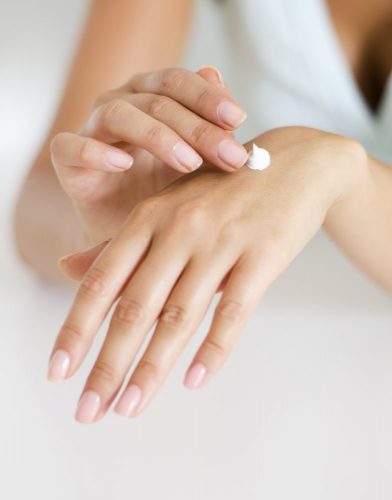
Use a Humidifier
One of the main reasons skin dries out in the winter is the lack of humidity in the air. It is best to use a humidifier in your house and work environment. If you have to choose one place, our advice would be the bedroom. Here, your skin will be exposed to moisture in the air throughout the night and keep it fresh for the day ahead.
Change Your Shower Routine
Some people take warmer and longer showers during the winter months. While this is great for defrosting cold toes, the steam will dilate pores and allow extra water to evaporate from your skin. Warm water also strips natural oils away. If you have to use warm water when you bathe, try to shorten your time in the shower. Drying appropriately is also important to keep your skin healthy. You should not rub your body because the towel is abrasive against the skin and may cause irritation, as well as dry skin to flake off and patches to spread. Instead, try gently patting away the water.
Stay Hydrated
Although you should always drink plenty of water throughout the day, it is particularly important during the winter months. You should drink 8-10 glasses of water per day. This will help to keep moisture in your skin. This is especially helpful if you frequently consume alcohol and coffee, which are diuretics and dehydrate you.
Protect Your Skin from the Outside Elements
When you must go outside, it is essential to protect your skin. You should cover any exposed areas with a scarf, gloves, and a hat. On a windy day, your skin may become dry and red from exposure. Also, winter may be a dark season, but the sun still shines brightly on certain days. It is necessary to wear a moisturizing sunscreen that will keep your skin protected from the sun as well.
Remove Makeup Carefully
The way you remove your makeup at the end of the night can dry out your skin. Many women use convenient cosmetic remover wipes, but, most of these products contain alcohol or similar ingredients that can be extremely drying. A better alternative is cold cream (an emulsion of water and oil). This item has been around since the second-century but still has a lot of great qualities. It will add moisture to your skin while effectively removing makeup.
Choose the Perfect Moisturizer
If you enter any store, you probably are bombarded with hundreds of moisturizing products. It is important to know how to choose a product that works for your specific skin type.
You may wonder whether to use a lotion, ointment, or cream. The difference is the amount of water that each contains. Most lotions are comprised of a high volume of water when compared to the other ointments and creams. This means that if you have extremely dry skin, a cream or ointment is a smarter option. As you read the ingredient labels, look for a product that contains humectants. These draw moisture from the inner layer of your skin to the other layers. A common humectant is a glycerin. Another helpful ingredient is an occlusive agent (Lanolin, mineral oil, or paraffin). These will create a barrier to your skin that seals in moisture and adds a protective wall.
Be sure to apply moisturizer after showering (and drying off correctly). You should also have a bottle of hand cream available at home and at work. This is especially important if you frequently wash your hands throughout the day.
Visit a Trusted Dermatologist
The best way to care for your skin during cold weather is to visit a dermatologist. An experienced doctor can offer more preventative tips that will keep your skin from drying out. They will also be able to provide recommendations based on your specific skin condition and type.
At Universal Dermatology & Vein Care, we are dedicated to finding a treatment that targets each patient’s individual needs. Whether you are having trouble with acne, varicose veins, or dry skin, you will benefit from our services. To learn more or to schedule an appointment, contact us today.
Lear MoreThe Best Dermatologists in Ohio
Not all dermatologists are created equal and this is important to keep in mind when selecting your provider. So before we go into listing some specific dermatologists in Ohio that we admire as peers, here are some important points for you to consider in your search.
Check for Proper Credentials
First and foremost your dermatologist should be Board certified by the American Board of Dermatology and they should be a Fellow of the American Academy of Dermatology (FAAD). You can visit aad.org/find-a-derm and type in the name of the doctor you are researching to verify this. In the screenshot below you can see that aad.org has verified that our Dr. Skandamis is both a Fellow (FAAD) and is Certified in dermatology by AAD:
Beware of doctors with credentials that make it sound like they are board certified but in reality they did not go through the rigorous residency training. Such credentials can include FASLMS or any board of cosmetic, laser, or aesthetic medicine. These credentials do not require residency training and are credentials that can be purchased by any doctor wishing to open a med spa. This training is far inferior to the years spent becoming a board-certified dermatologist.
Research Patient Reviews
Being board certified is step 1—showcasing that you can take the training into the real world and run a successful practice is step 2. There is no better way to gauge this than to read reviews from past patients. While it is virtually impossible to find a practice that has 100% 5-star reviews, you want to find those that showcase a strong overall record with patients and get close to that level. You can find reviews on a variety of sites including Google, Facebook, Yelp, ZocDoc and through review aggregators on a practice’s website.
Don’t just rely on a few hand-picked testimonials on their website—be sure to check multiple sources to get the best overall picture of a practice.
Beware of the “Cheap” Providers
This is typically more of a concern when it comes to those that are not board-certified dermatologists so fortunately, you should not have to worry too much about this if you have followed the first two steps. If something jumps out as an outlier by being drastically underpriced, there is probably a good reason that that person does not charge typical market rates.
Some of Ohio’s Best Dermatologists
While we of course have a natural bias for Dr. Skandamis and our whole Universal Dermatology team, we wanted to take a moment and recognize some of our peers in Ohio that we admire:
Buckeye Dermatology | With locations in Grove City and Springfield, the physicians at Buckeye Dermatology are board certified in clinical and cosmetic dermatology along with micrographic surgery and aesthetician services.
Oakview Dermatology | Oakview Dermatology has four offices, three doctors, five physicians’ assistants and prides themselves on accepting ten different insurance providers. This staff strives to help each of their patients know the risks and procedures for skin cancer.
Dermatologists of Greater Columbus | Dr. Michael Conroy, M.D. founded DGC in 2008 after his fellowship at Geisinger Medical Center. He is now the president of the Central Ohio Dermatologic Society and specializes in surgical dermatology.
Central Ohio Skin and Cancer | Dr. Jason Nash is board certified in dermatopathology as well as anatomic and clinical pathology. After starting the in-house dermatopathology lab in 2007, he now reviews and studies all skin biopsies for cancerous cells and indicators.
Center for Surgical Dermatology | Specializing in Mohs Micrographic Skin Cancer surgery, the Center for Surgical Dermatology is home to four board certified dermatologists who are all members of the American Academy of Dermatology.
Skin Dermatology and Aesthetics | Partnering with Northeast Dermatology, Doctors Monique Kademian and Jeannie Hennessy are both certified dermatologists at Skin. Dr. Kademian has extensive experience with laser devices, and Dr. Hennessy is a board certified Dermatopathologist and Anatomic Pathologist.
Lear More
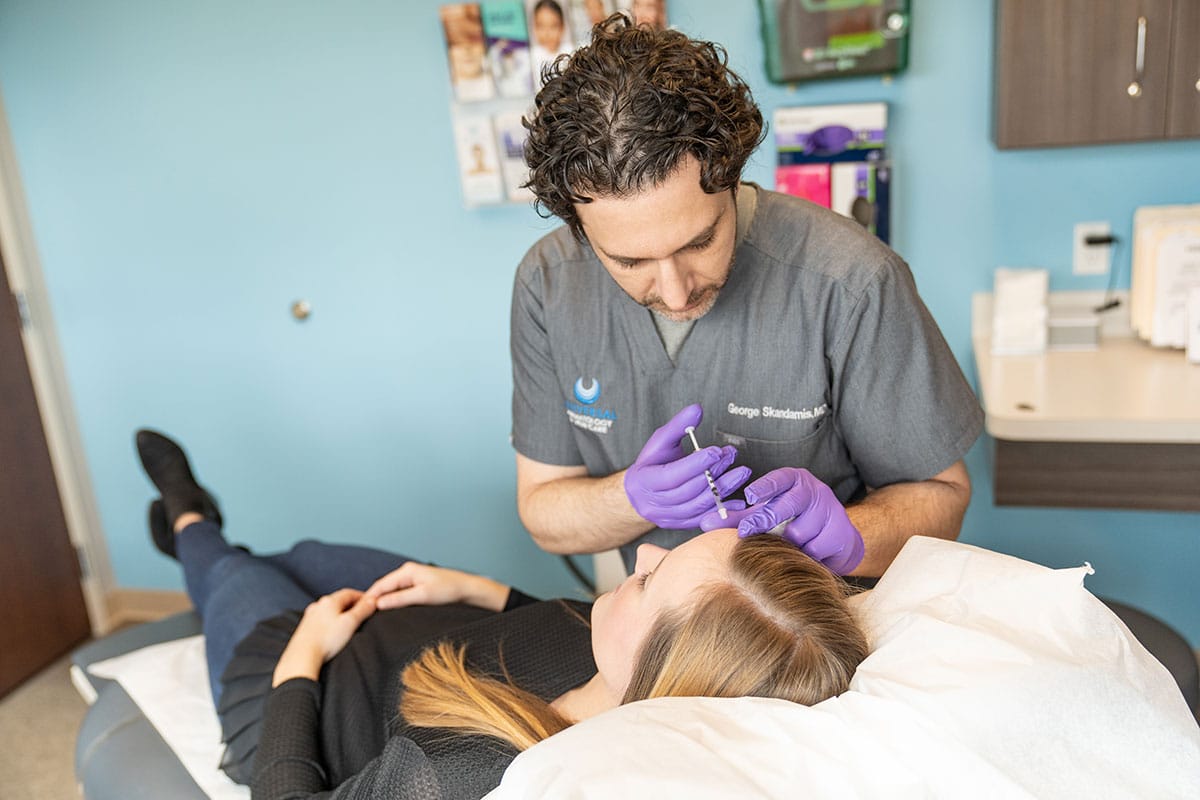 Our Dermatologists
Our Dermatologists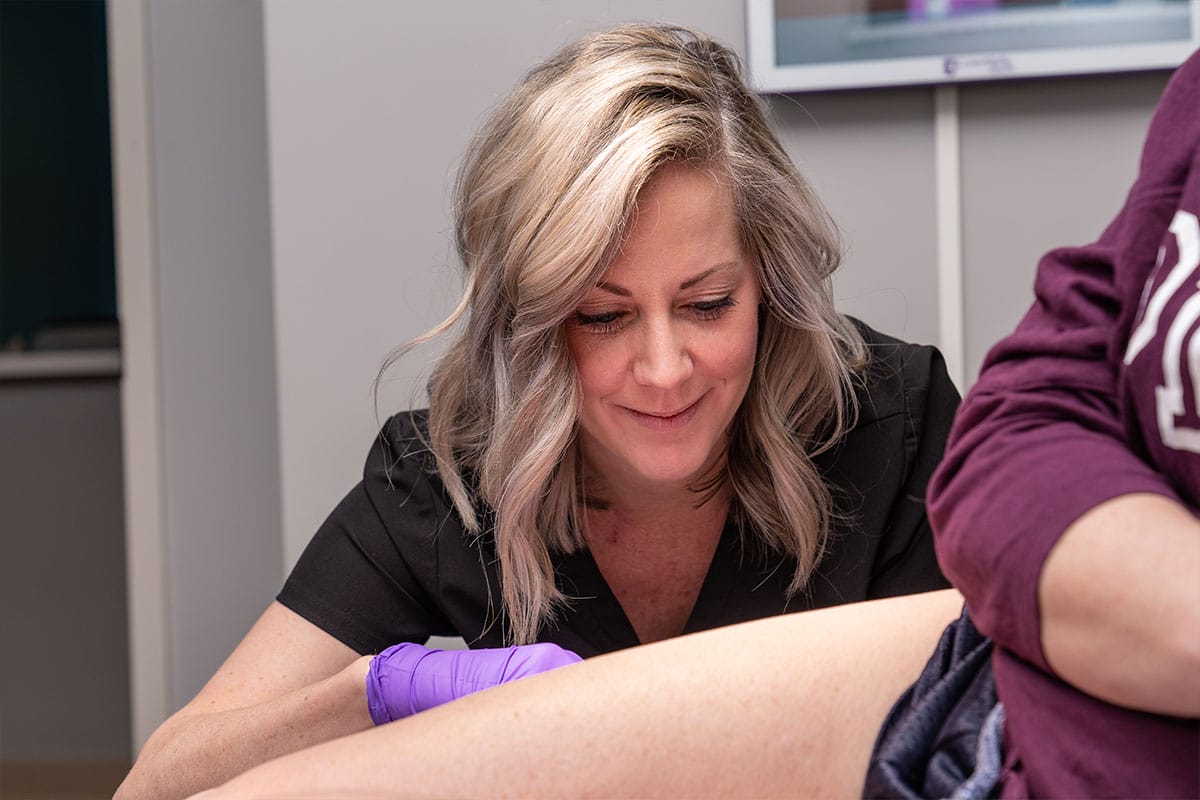 Our Providers
Our Providers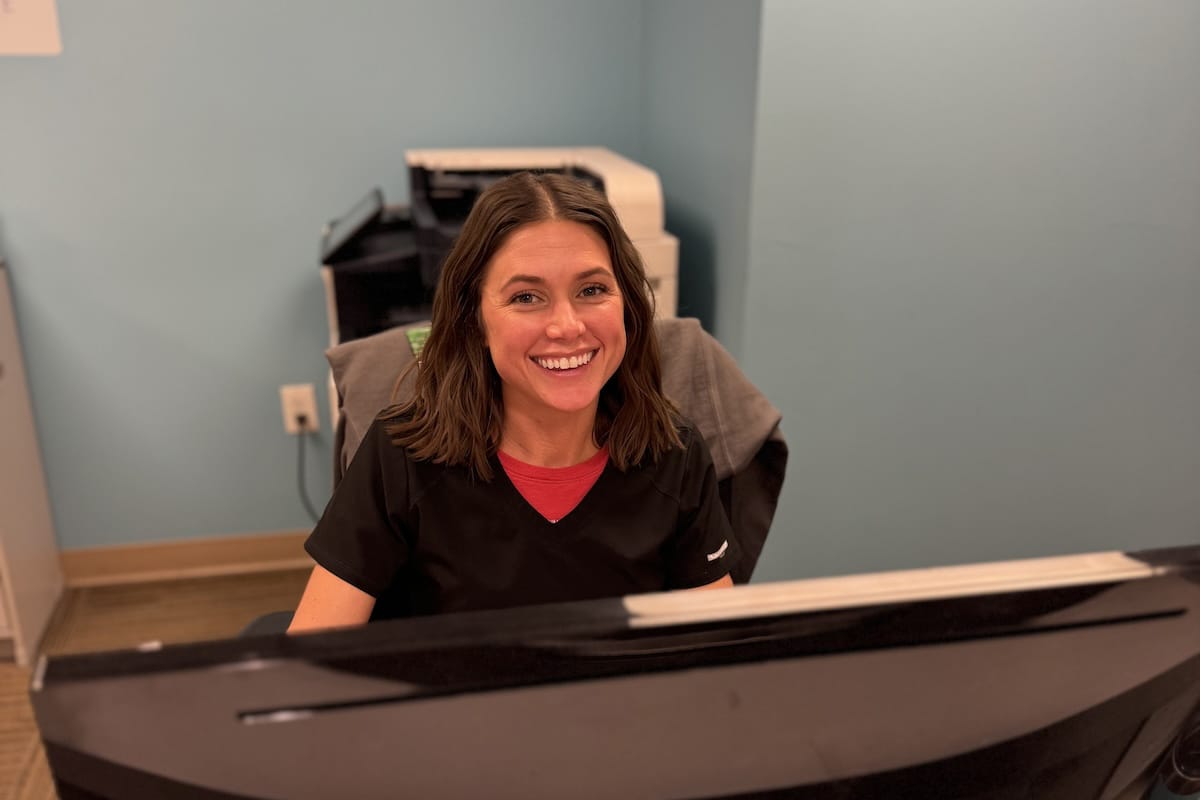 Our Staff
Our Staff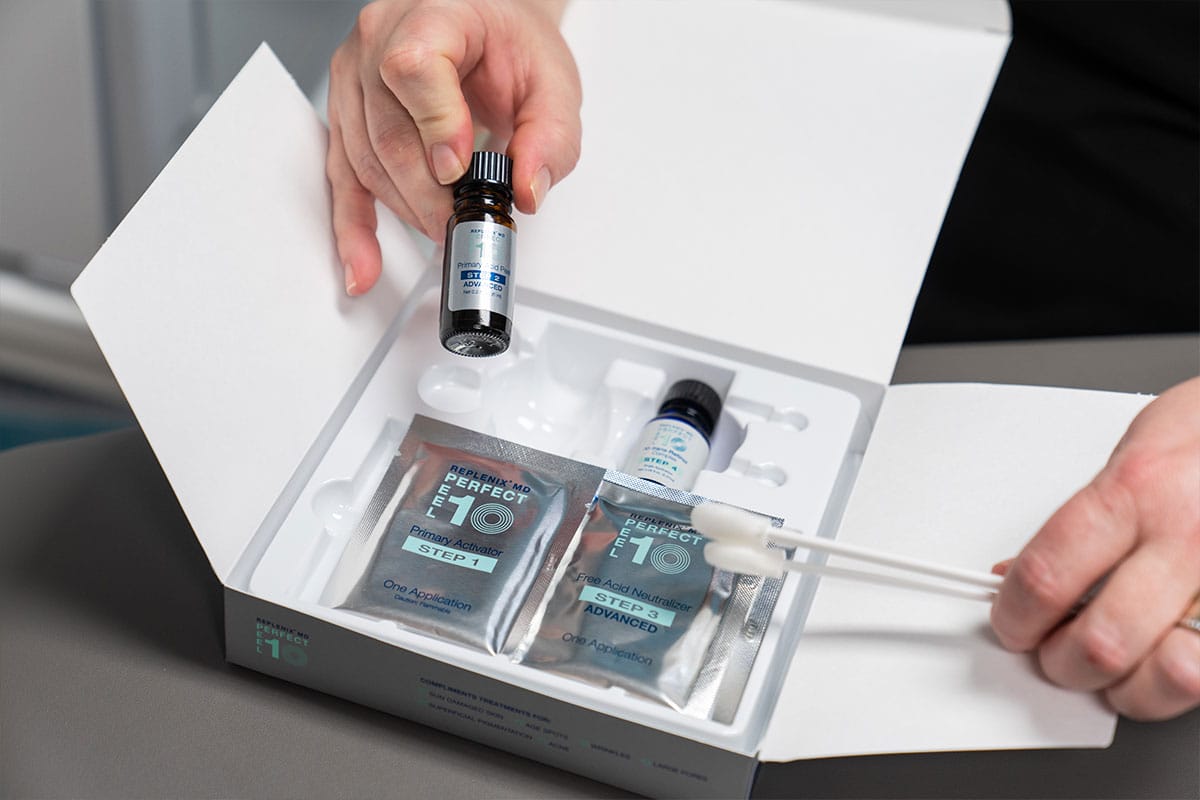 Specials
Specials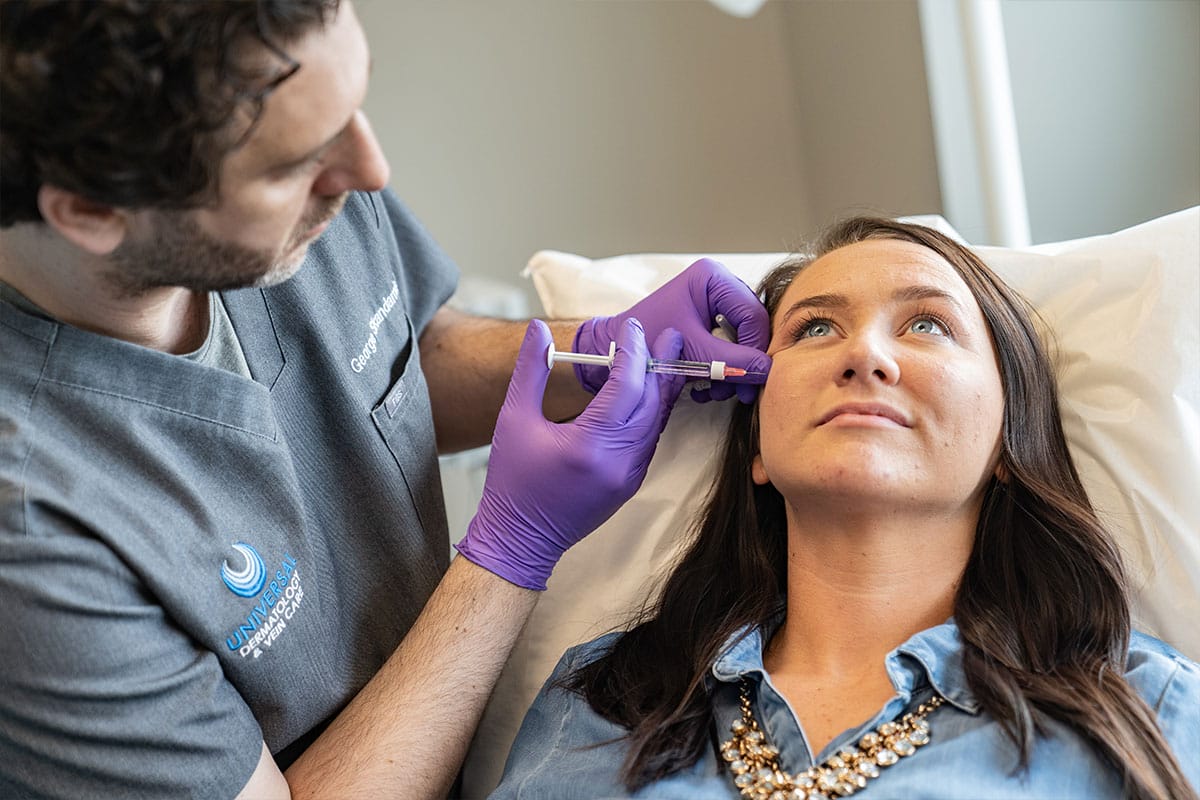 Financing
Financing Pay Bill Online
Pay Bill Online